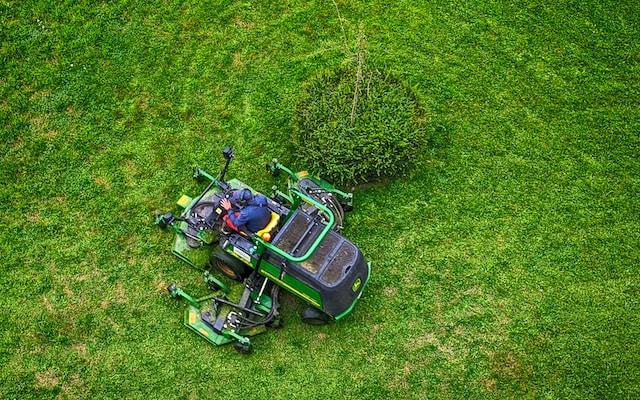Lawn fungus can ruin even the best landscaping efforts quickly. The fungus spreads quickly and is difficult to eradicate once it has infected a large enough grass area. We feel it is critical to provide these experts and ensure that property owners are aware of the basics of fungal detection in lawns and when to intervene.
The last thing you want to see after meticulous lawn maintenance and fertilizing are flaws. When faults appear, such as bare areas or yellowing, you may assume that watering and fertilizer are all that is required. However, in some circumstances, you’re dealing with a fungal epidemic that necessitates more than just grass maintenance.
Learn how fungus creates lawn illnesses and how to eliminate and avoid them with this list of common fungi-caused lawn diseases. You’ll also find out whether or not the condition is damaging to your lawn.
Table of Contents
Determine The Type Of Lawn fungus
There are several types of grass fungus to watch out for as if that wasn’t enough of a pain. Although many of the symptoms are similar, and we’ll go over how to detect whether your lawn has fungus in the next section. It’s important to remember that there are several types of lawn fungus or lawn disease.
One type of grass fungal disease targets grass and leaves specifically, whereas others infect the soil and inhibit grass growth. Others appear as spots scattered around the lawn, while one of the most easily recognized fungi appears as a fairy ring in the turfgrass.
Rings of mushrooms, streaks in the lawn, discoloration, or powdery blotches are examples of other varieties. Remember that your lawn is a living organism with millions of fungal spores, most of which will never cause problems. So, you don’t need to worry about all types of fungus because some are good for your lawn.
Fungi often grow in the dampest conditions, such as under trees or in low-lying areas of the earth where water collects. The problem with fungus is that it doesn’t show up until the sickness has progressed. So, dealing with those patches necessitates a thorough understanding of how the infection works.
A Few Considerations To Dealt With Lawn Fungus
Healthy soil and adequate management are the first steps in preventing lawn fungus, but even then, it frequently takes an expert eye to keep it at away. Any business with lawns needs to know how to treat grass fungus. However, you can also deal with these issues yourself by following the mentioned below steps:
1) Use Well-Prepared Lawnmower
Instead of cutting the tops of the grass leaves, dull mower blades pull them off. Grass blades with ragged, frayed edges are more prone to fungal disease than those with neat, clean cuts.
Mower blades should be sharpened before the mowing season begins in the spring. You may wish to sharpen your mower blades a second time throughout the summer if you have a large lawn.
While cutting grass extremely short may appear to be a quick and easy approach to reduce mowing frequency, it might really harm your lawn. The less light the grass can absorb from the sun, the shorter the blades are. To prevent fungus spores from being dispersed by the mower, catch your clippings and remove them from the grass.
2) Don’t Water The Lawn At Night Time
Healthy lawns require about an inch of water per week, but the faster the grass dries after watering, the lower the risk of lawn fungus growing. Your lawn will have the whole day to dry if you water early in the morning. Watering your lawn in the morning hours is always a good idea.
It provides the grass plenty of opportunity to absorb water before the sun dries it up during the day. Make sure to water the grass not more than once a week for a healthy lawn.
3) Don’t Use The Fertilizers Unnecessarily
If your grass doesn’t get enough nutrients, it won’t establish a healthy root and leaf system. But if you fertilize too much, you’ll encourage rapid blade growth that the roots can’t handle. Both are blunders that put the grass under much stress and put it at danger for illness.
Choose a fertilizer for your turfgrass type and a fertilizing applicator that you can control to dispense the exact amount of product advised by the fertilizer manufacturer.
Make sure to use the slow-release organic fertilizer to feed your grass. Using a high-quality fertilizer will give your grass the best opportunity of growing healthy, and when used in conjunction with a potent fungicide, you’ll reduce the chances of growth.
4) Use Fungicides As The Last Option
You may need to apply a topical fungicide if the initial treatments do not eliminate your grass fungus problem. A broad-spectrum fungicide will cure a variety of fungi, but for the best results, take a sample of the infected turf grass to one of the Extension Offices and test it to determine which fungus is causing the problem.
You’ll get thorough information about the fungus, as well as recommendations for the best type of fungicide to use to treat it.
Final Verdict
You have the option of fighting grass fungus yourself or entrusting it to your local professionals. They will provide you with complete lawn management services according to your lawn’s condition and fungal type in it.
You may now properly scan your yard and sniff out these diseases now that you have a firm understanding of the numerous grass fungi and the diseases they produce. In most situations, rapid action is required.
So, take advantage of your new knowledge to get a jump on these fungi and diseases before they damage your lovely lawn.





